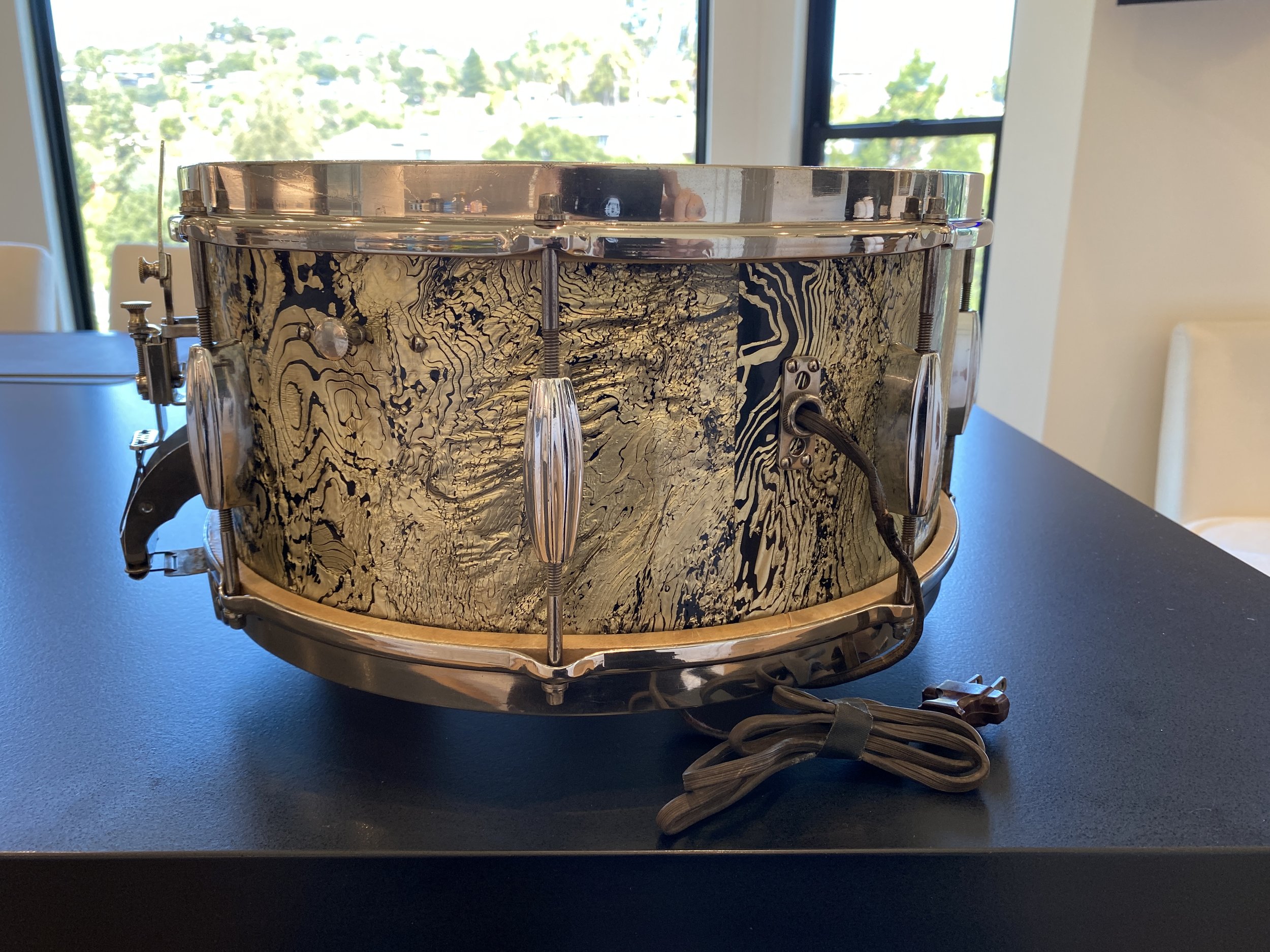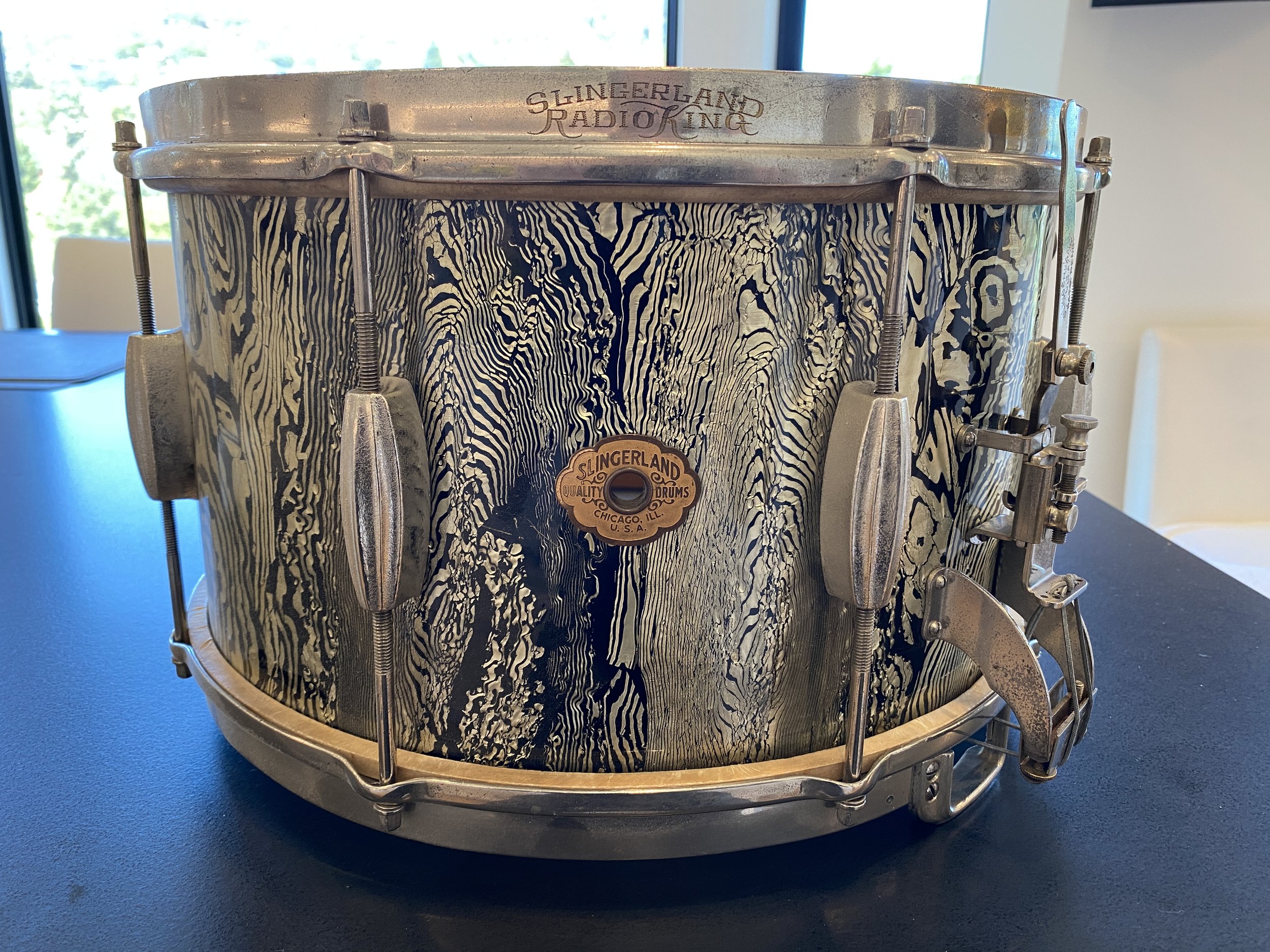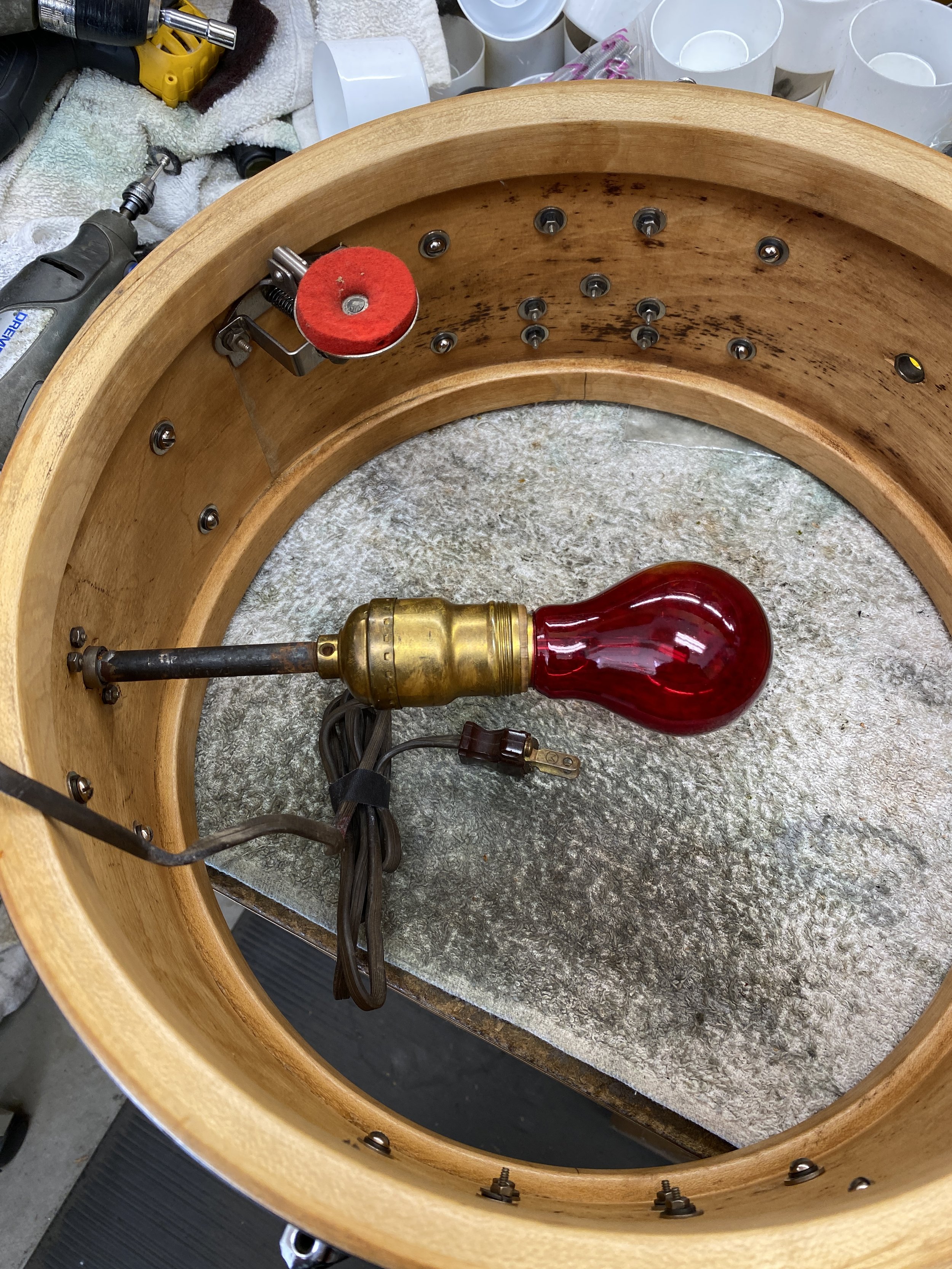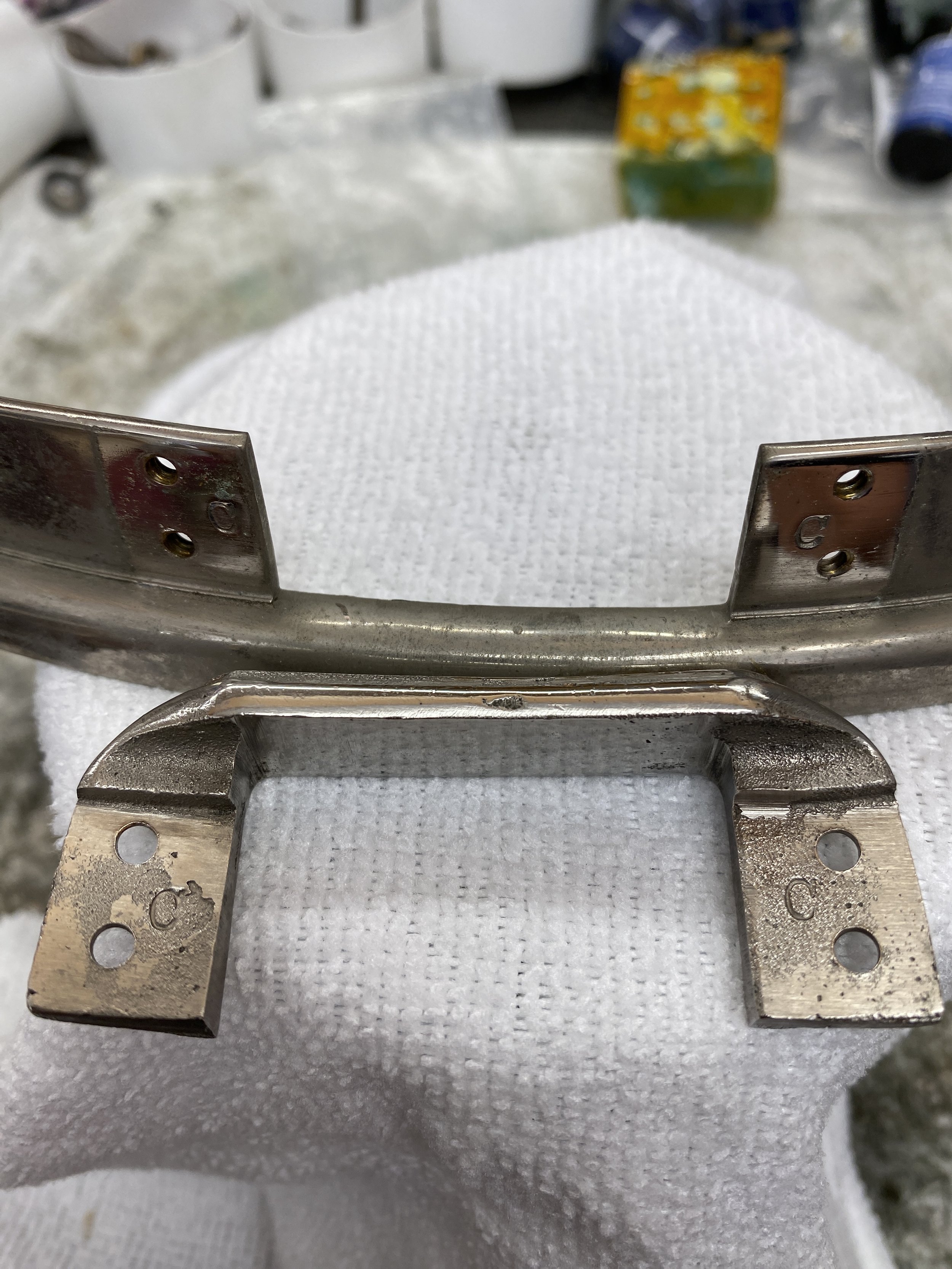Hi,
I just got this drum from my friend and fellow collector Joey Barthelette of Wood & Weather Drum Shop. I had seen this drum 2 years ago at the Chicago Show but it was not for sale at that time. Thanks goes to Joey for remembering that I was interested in this very rare snare drum. We struck a deal and here we are.
A little history:
The Broadcaster Model was very short-lived (1934-35) so for those of you that may not be familiar with this model here is a short history and background data regarding the Slingerland Broadcaster Model. The following is from Rob Cook's Slingerland Book (first edition): "The Broadcaster was evidently a forerunner of the Radio King, the strainer is a very early Radio King style strainer and the lugs do not have inserts. (The tension rods thread directly into the lugs.) The muffler was the single-pad style Harold R. Dodd muffler." Thanks again to Rob Cook. I have also read that Slingerland was legally forced to discontinue using the word "Broadcaster" (with a "c") as the Fred Gretsch Co. had been using the name "Broadkaster" (with a "k") on their drums way before Slingerland and therefore the court ruled in favor of Gretsch that Slingerland's Broadcaster was too close sounding/looking to Gretsch's Broadkaster.
THE SHELL:
The solid maple shell is in good shape with no cracks or separation in the Abalone wrap. A good cleaning/polishing brought everything back to life. The interior is very clean and the cloud badge is tight.
THE HARDWARE:
All of the nickel plated/chrome hardware is present and accounted for. The tension rods were the dirtiest and most worn but eventually cleaned up nicely. When tension rods are worn down in some areas to the base metal I clean and polish and as a final protection I shoot a coat or two of clear lacquer so any tarnishing/rusting shouldn’t happen for a long time. The tapped lugs are all good with no stripping. I do have a pet peeve with Slingerland snare drums of this era and I have seen this on a number of Slingerland snare drums and a few that I own. In some instances it seems for some reason that Slingerland chose to use chrome Streamlined lugs and occasionally chrome extension arms while the rest of the hardware is nickel plated. The obvious answer is parts availability or was Slingerland trying to be different (or cute) by using some chrome parts in contrast with nickel plated parts? NOT a fan of this but this is only my opinion. There is a Leedy heater plate connected to a red light bulb. After-market of-the-era heater plates/light bulbs are usually not a problem for me as this shows that the drum was gigged on by the previous owner(s). I left the attached original extension cord as it adds a little history to the drum. The snare gates are same that are seen on the DuAll Models (1932-34). I am curious as to the “manufacturers cartouche” that is seen on the inside of these snare gates. One side of the hoop is marked “C” with the snare gate also marked “C” while the other side of the hoop is marked “C C” with the other snare gate marked “C C”. Not sure why this “C” “C C” happens as the snares gates are interchangeable and will fit either side. I would be very interested if anyone out there with manufacturing experience can comment on this.
I have never seen or heard of a Broadcaster batter head so I used a period correct Radio King batter and a period correct slunk head.
I have also added a photo of my 1936 Slingerland 8 x 14 Abalone Pearl Bernie Mattison Radio King Model (thanks to Rich Kalinsky).
Enjoy!
Mike Curotto







